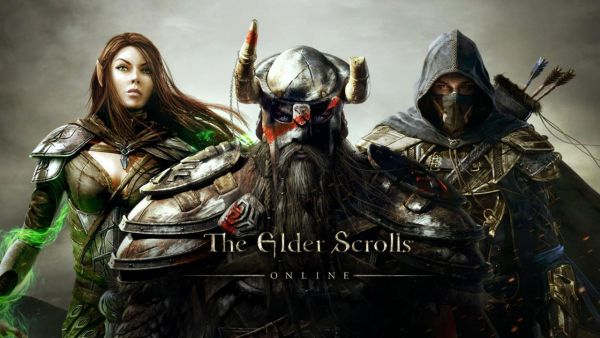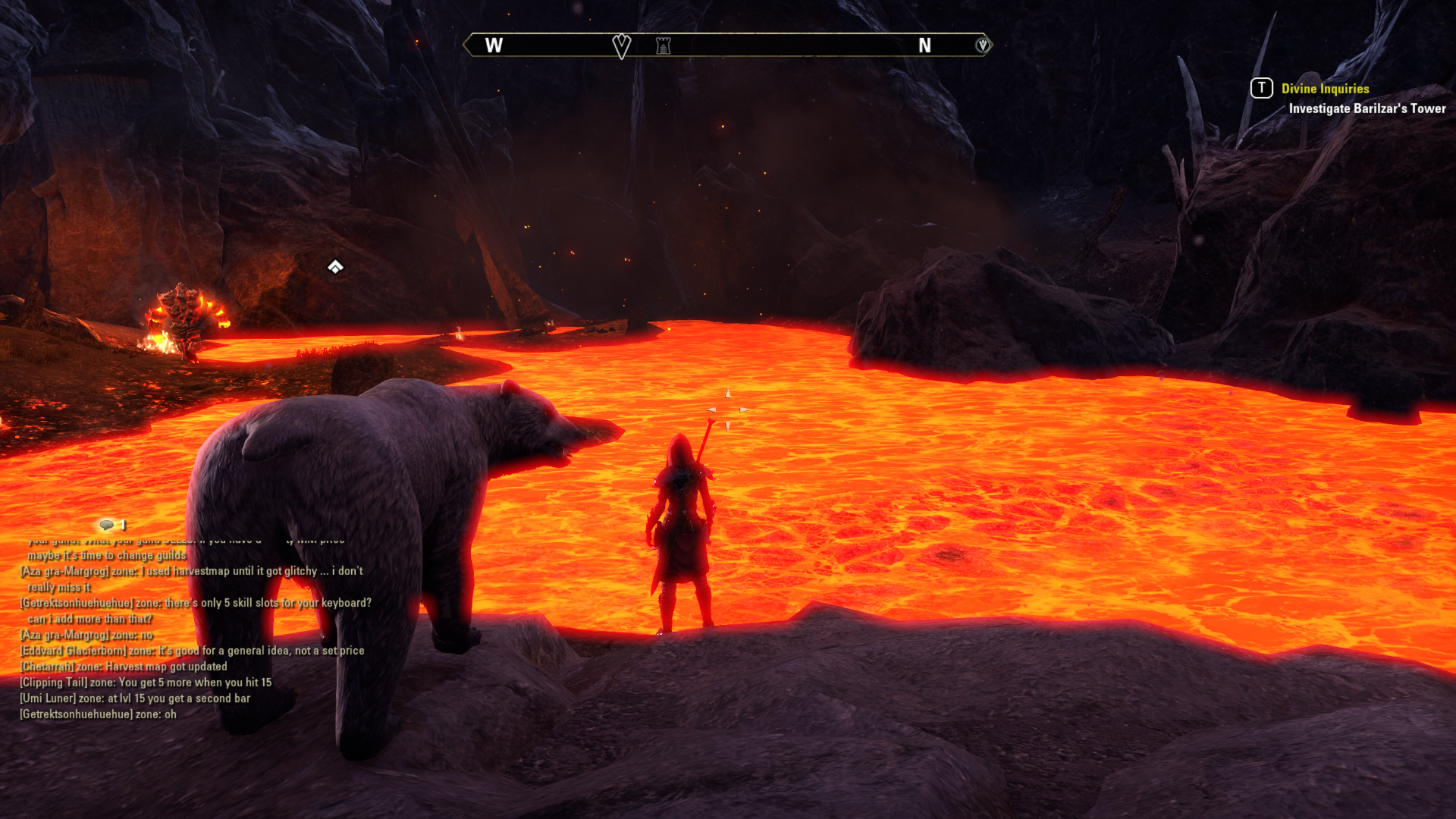By Michael Sagoe (mikedot)
There is certainly a lot of buzz regarding the release for one of the biggest MMORPGs of the year: The Elders Scrolls Online (ESO) is the latest chapter in the long running RPG series that started way back in 1994. Set before the events of the previous titles including Skyrim, Oblivion and Morrowind, ESO promises to carry on the same non-linear exploration and gameplay that made the series so popular. However due to the nature of modern MMORPGs, many fans of the series have expressed their concerns since the very first announcement of the game. Many others are left skeptical whether or not Zenimax will be able to pull it off just right, including myself, so I attended the press event with uncertainty.
Keep in mind that I am not too familiar with the series as a whole, so I will not be able to say much regarding story content and lore consistency. Instead, my impressions will mainly be focused on gameplay, pace of progression and the alliance war feature.
Starting off with the initial character creation, players can choose between nine different races between three different alliances: Daggerfall Covenent races include Bretons, Redguards and Orcs. Ebonheart Pact races include Nords, Dark Elves and Argonians. Lastly, Aldmeri Dominion races include High Elves, Wood Elves and Khajiits. As my character choice, I wanted to play as the manliest looking race in the bunch, so I decided to go with a rugged Nord.
There’s is a decent amount of character creation options available, including various selections for facial shaping, body mass adjustments via a triangular adjustor, skin color, hair style and more, all complete with sliders for some fine tuning. However, despite all these available options, the customization feels a bit restrictive, mainly due to how limited players are with the slider values. Of course, I wasn’t expecting an extensive character creation system (on the same level as, say… All Points Bulletin or Blade & Soul), but I couldn’t help but feel that it would be far too easy for players to unintentionally create clones and look-alikes within every player’s chosen gender and race.
After character creation, players can then choose their starting class, including Dragonknight, Sorcerer, Nightlblade and Templar. Each class has their own skill lines so players can spec themselves for different play styles, which sounds all well and good, but later on I would find the systems tied to this to be surprisingly limited. So for my class choice, I went with the Dragonknight so I could focus on up-close melee combat.
Once my character was all set, I was dropped into a dark prison cave all by my lonesome, until a strange figure appeared named “The Prophet,” who would then help me escape the cave with other prisoners. Here, I would get my first taste of ESO’s combat. And it was a taste that was incredibly sour and would last throughout my entire playing experience.
The core combat mechanics are fairly straightforward, as pressing LMB performs basic attacks and holding RMB performs blocks. Players can hold the LMB to perform heavy attacks and hold RMB before pressing LMB to perform shoves and interrupts.
The first gripe I had with the combat was with how unsatisfying melee combat felt, as every hit lacked a sense of impact. Subtle animation and visual tricks such as camera shakes and hitpauses could have gone a long way to making melee combat feel visceral, but ESO failed to accomplish this on multiple levels. It wasn’t until around level eight when I unlocked my uppercut skill that I was actually given an attack that actually felt good to perform, as the attack knocks enemies off the ground.
Another issue with combat was the fact that it used pseudo-non targeting (also known as soft targeting) as certain skills could not be performed until an enemy is highlighted over the player’s crosshair, so if there’s a moment where the player would like to use their combat skills in an unconventional way, such as using a leaping strike in order to avoid enemy fire, it simply won’t be possible.
(NOTE – 2/16/2014: It has been brought to my attention recently that ESO allows players to switch between two weapons sets of the player’s choosing, allowing them to bring a second skill set along in the process. This article has been slightly updated to include this detail.)
Now, I’m personally fond of accessibility and simplicity, but ESO takes this way too far by only allowing a limited number of skills that can be used at a time per battle, which will inevitably make combat feel repetitive early on. I mean sure, games such as Guild Wars and the upcoming WildStar have similar systems with limited action sets, but just for fun: Let us compare each of these games with the amount of active skills available to the player:

Guild Wars 2: Five skills (among two weapon sets) for weapon abilities and five other skills separated by one for healing, three for utility and one elite skill. (Up to 15 skills available per battle.)

WildStar: Eight skills for assault, support and utility, one for path skills, one for gadget skills and one innate skill among two stance sets.
Now taking a looking at what ESO has available…

ESO: Five slots for combat, support, buff skills and one ultimate skill (among two weapon sets.)
With these direct comparisons, you can see just how limited things are with how ESO handles the limited action set approach. It’s nice that players can switch between those weapons on the fly in ESO, but with only six skills usable at a time, several skills coming off as too similar to each other, and some of which cannot be used in unconventional ways, it still comes off as lacking.
The reason they wanted it this way is mostly contributed to the fact that the developers want to make this game accessible enough for home consoles, which personally is a horrid idea for even the most casual of MMO players out there. If it was up to me, I would rather have those home console players stick a mouse and keyboard into their consoles, rather than sticking everyone with a dumbed down combat scheme.
So with all that said, I can drop the rant and focus back on the questing in ESO. After escaping the prison, players are free to roam around a village on a snowy Island. My time spent on that island was mainly filled with typical fetch and kill quests, one after another, until I was able to leave the island after completing a critical story quest. The early questing experience fails to give me any real sense of freedom or exploration, as ESO’s leveling progression pretty much dictates where I can go and what I can do, more so than any other modern MMO I’ve played.
After I was able to leave the island, complete a few more quests and painstakingly grind my way to LV10, it was time for me to try out the game’s alliance war mode, which was one of the major highlights during the press event. For anyone that has ever played World vs. World vs. World mode in Guild Wars 2, you’ll know almost instantly what alliance war is all about: Players will fight over towns, farms, castles and resources in an attempt to control the continent of Cyrodiil.
Starting out in my alliance castle, players in my alliance were already getting prepared for battle, with our first attack set out on a nearby fort owned by the Aldmeri Dominion, which already had 70% control over the map. As some players were explaining finer details of battle, others were busy trying to attack the well-guarded fort only using ballista cannons and catapults. It was a long task trying to take the fort door down, but we managed to do it with very little interference from the enemy. Once we got inside, a player instructed others to use battering rams instead of other siege weapons. After a bit of an impromptu boot camp on siege weapon use, our fort attacks started going a lot smoother.
We managed to bust down the inner fort door in record time, fully capturing the fortification in minutes. Afterwards, everyone purchased some repair kits in order to fix all the damage we had done to the fort before heading off to the next one. We continued on our merry way expecting some sort of resistance, but three more forts fell without a single peep from the Elven scum and their cronies. Yet in an inconspicuous looking farmland, the enemy alliance finally let us feel their presence. An entire army from the Aldmeri Dominion appeared out of nowhere and ambushed us, leaving most of us dead where we were, forced to watch the rest of the battle in ghost vision.
Of course, we didn’t want to take it lying down, so we tried launching our own ambush. The , Aldmeri Dominion was looking to take back one of our captured farms, so we all ran off to the spot and tried hiding away from plain sight.
Once they arrived, we sprang into action and tried to beat them at their own game, but ultimately failed as they continued to push on. But unfortunately for me: my time was up, and that was end of my ESO press test experience. I managed to strike someone down just as I had to split.
While my time spent playing around during the Alliance War was fun, it was the only enjoyable part of my entire ESO experience. Everything else about the game seems to be too accessible and simplistic for my taste, so I’m very uncertain over how much lasting appeal ESO will have for anyone that isn’t a diehard fan of the Elders Scroll series. With reports of the game having no open beta test for the public, it only worries me further regarding how well ESO will do in the long run.













